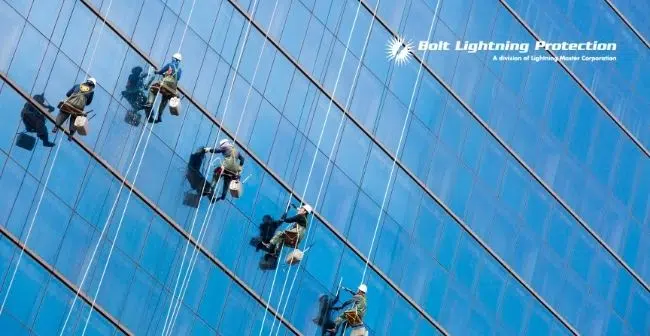Intense Lightning Activity Due to Hurricanes
Generally, the crackle of lightning means one thing: a storm is coming. Surprisingly, though hurricanes are typically described as violent thunderstorms accompanied by whirling masses of wind and rain, they rarely produce lightning. Hurricanes swirl, they blow, and they flood, but seldom do they crackle. When they do, it can be a sign of something more ominous.
When do Hurricanes Produce Lightning?
Lightning is caused by triboelectrification, where vertical winds rub water and ice together, building electric charges. As a result, the top of a cloud becomes positively charged compared to the ground charge. Remember playing with magnets as a kid? Like charges repel and opposite charges attract. This charge on the base of the storm cloud induces a shadow of opposite charge on the surface of the earth beneath it. As the charged storm cloud travels across the earth, it drags the ground charge along beneath it. When the ground charge reaches a structure, the cloud base charge pulls it up onto the structure. If, before it moves away, the charge on the base of the storm cloud manages to concentrate sufficient ground charge potential on the structure to overcome the dielectric of the intervening air, an arc (lightning strike) occurs.
Thunderstorms produce powerful updrafts of air, but in hurricanes, the winds are horizontal. Rarely do the winds churn vertically fast enough to produce lightning. However, it’s been known to happen.
The 2005 Atlantic Hurricane Season and 2019’s Hurricane Dorian were accompanied by a lightning barrage near the eyewall. Lightning is not terribly unusual in a hurricane’s periphery as weaker ambient winds can churn upwards. Towards the storm center, the winds slant and are entrained in a sink-like vortex. So, when lightning crackles in a storm’s inner rain bands, it indicates rapid intensification.
Hurricanes that produce lightning have some similar characteristics:
- Lightning was detected before they made landfall
- The lightning was located near the hurricane’s eyewall
- They were all powerful hurricanes categorized as category 4 or 5 storms
Hurricanes accompanied by lightning are destructive. Electric hurricanes can spell havoc and disaster. Scientists are still unclear on why some hurricanes produce lightning, but one thing is for sure: lightning protection is imperative especially if you live in hurricane-prone areas.
Hurricane Lightning Preparedness
Hurricane season is upon us and knowing how to protect your property in an emergency is an integral part of being prepared. Each year roughly between August and November, atmospheric conditions are just right to produce nature’s largest storm. Hurricane preparedness can make all the difference.
Unfortunately, disaster preparedness doesn’t start when the storms are near at hand. It starts during the regular season when hurricanes and tropical storms are unlikely. This way, you’re ready when threatening weather approaches.
Every year, lightning costs more than $1 billion in insured losses, not to mention the fatalities and countless injuries. There’s no safe place outdoors when a thunderstorm is nearby. Many of these fatalities and losses can be prevented by efficient lighting protection systems and surge suppressors.
Lightning strikes carry extremely high electrical power and heat, which can induce destructive power surges and physical damage to properties and facilities. Professionally installed lightning protection systems provide a network of low-resistance paths that intercept and dissipate lightning’s electrical charge.
Investing in lightning protection can protect personnel and property during a storm. Protective upgrades are key to reducing lightning damage.
In addition to hurricane shutters, water barriers, impact-resistant doors, and roof braces, lightning protection systems can keep your family and your property safe.
Prepare Now: A Hurricane Can Produce Far-Reaching Consequences
Mother nature is unpredictable so give yourself the best chance and be prepared.
First and foremost: play it safe. You can never be too prepared, especially if you live in or near hurricane prone areas. Electrical disruptions and outages because of hurricanes can reach hundreds of miles. You don’t have to live within a typical hurricane path to be affected.
Damage from lightning in hurricanes can spin off hundreds of miles from the center of a hurricane. An annual inspection is important to make sure your lightning protection system is in working condition. It is smart to take this preventative measure, so you are not scrambling at the last minute when storm season is upon you.
If you have questions about your existing lightning protection system, or if you think you need lightning protection, the team at Lightning Master is here for you. Let us help you stay far ahead of every lightning strike. Contact us today to schedule a free consultation for lightning and surge protection systems.




